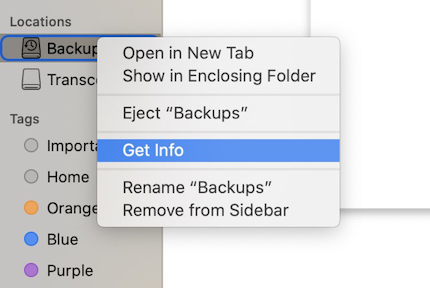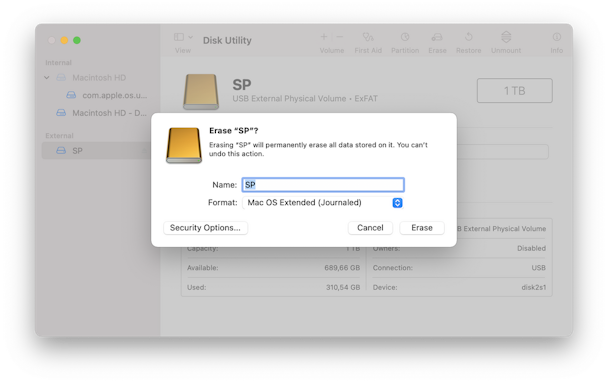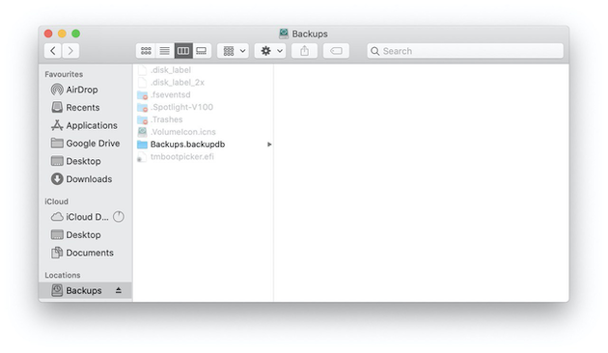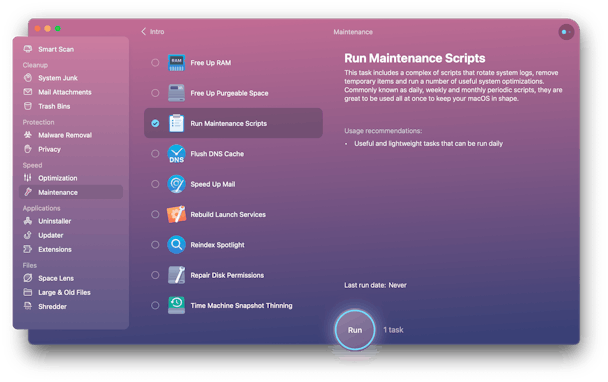Time Machine Not Continuing Back Up
Time Machine is a built-in feature on your Mac. It's one of the most important ones as it automatically backs up all of your files on an external drive (and restores them if they're ever deleted).
What to do if Time Machine won't back up
Unfortunately, many Mac users have reported that they're having difficulty backing up with Time Machine after upgrading their computers to the latest macOS version. If you're one of those users, check out our tips for troubleshooting when Time Machine won't back up your files.
Make sure your external hard drive's file system is compatible with Time Machine
One potential problem that may prevent Time Machine from performing backups is that your external hard drive is formatted incorrectly, making it incompatible with Time Machine.
While Windows FAT and NTFS are used as the default file system for many external drives, Time Machine can't use them — it requires a native macOS format. However, there is one macOS format that doesn't work, either: APFS. While it's fine that your Mac uses APFS, Time Machine can't.
To determine the format of your external hard drive:
- Connect your external drive to your Mac.
- In Finder, select the drive from the left sidebar and click Get Info. You can also use the keyboard shortcut Command-I.

- Your drive's format will appear in the list of general information next to Format:

If your external drive is in one of these unsupported formats, you'll need to reformat it correctly before it's used to back up your Mac. In order to work with Time Machine, your external drive needs to be formatted as Mac OS Extended (Journaled) with a GUID Partition Table (GPT).
Here's how to format your external drive using Disk Utility:
- Connect your external drive to your Mac.
- In Finder, go to Applications > Utilities > Disk Utility.
- In Disk Utility, select your external drive from the list on the left.
- Select Erase from the top of the window.
- In the pop-up window, you have the option to rename your drive and change its format. Change the format to Mac OS Extended (Journaled) and click Erase.

Now that your external drive is in a compatible format, you should be able to back up to it with Time Machine.
Check your external hard drive's free space
If reformatting your external drive didn't work, you need to make sure that your external hard drive has enough available space to back up files (go to Disk Utility to check how much free space is left). If it doesn't, you'll need to delete some unneeded files to free up space or start backing up your Mac to a new hard drive.
What to do when Time Machine backup fails repeatedly
Clean up Time Machine and back up again
Time Machine uses some extra files to help it work. Sometimes, when Time Machine fails, it leaves some files around that it was using temporarily to help it work. Safely deleting these files and "cleaning up" Time Machine may fix any issues you're having with backups.
To do this, you'll need to first turn Time Machine off:
- Open System Preferences and go to the Time Machine tab > deselect Back Up Automatically.
Next, clean up Time Machine's working files:
- Open Finder.
- Go to your external hard drive.

- Open the "Backups.backupdb" folder and move the file ending in ".inProgress" to the Trash.
- Empty the Trash.
- Restart your Mac.
After this, turnTime Machine back on and start a new backup.
Check if other processes are causing problems with Time Machine
In some instances, malware (malicious software that can be installed without your knowledge) can prevent important applications from running properly.
It's almost impossible to detect malware on your Mac without special tools. My personal favorite, thanks to its sleek UI and intuitive features, is CleanMyMac X. Its Malware Removal quickly checks your Mac for malware, including trojans and worms, and allows you to delete them if found.
To run a malware scan on your Mac:
- Download CleanMyMac X — it has a free version.
- Install and launch the app.
- Go to Malware Removal and press Scan.
- When the scan is complete, you can delete the threats if any are found.

As you see, Time Machine backups can fail for various reasons. The first thing you should try when that happens is to make sure your external hard drive format is compatible with Time Machine. Then check whether your external hard drive has enough free space. In some cases, running maintenance can also solve the problem for you. You can use CleanMyMac X's Maintenance module for that.
Hope it was helpful!
Source: https://macpaw.com/how-to/time-machine-backup-failed

0 Response to "Time Machine Not Continuing Back Up"
Post a Comment